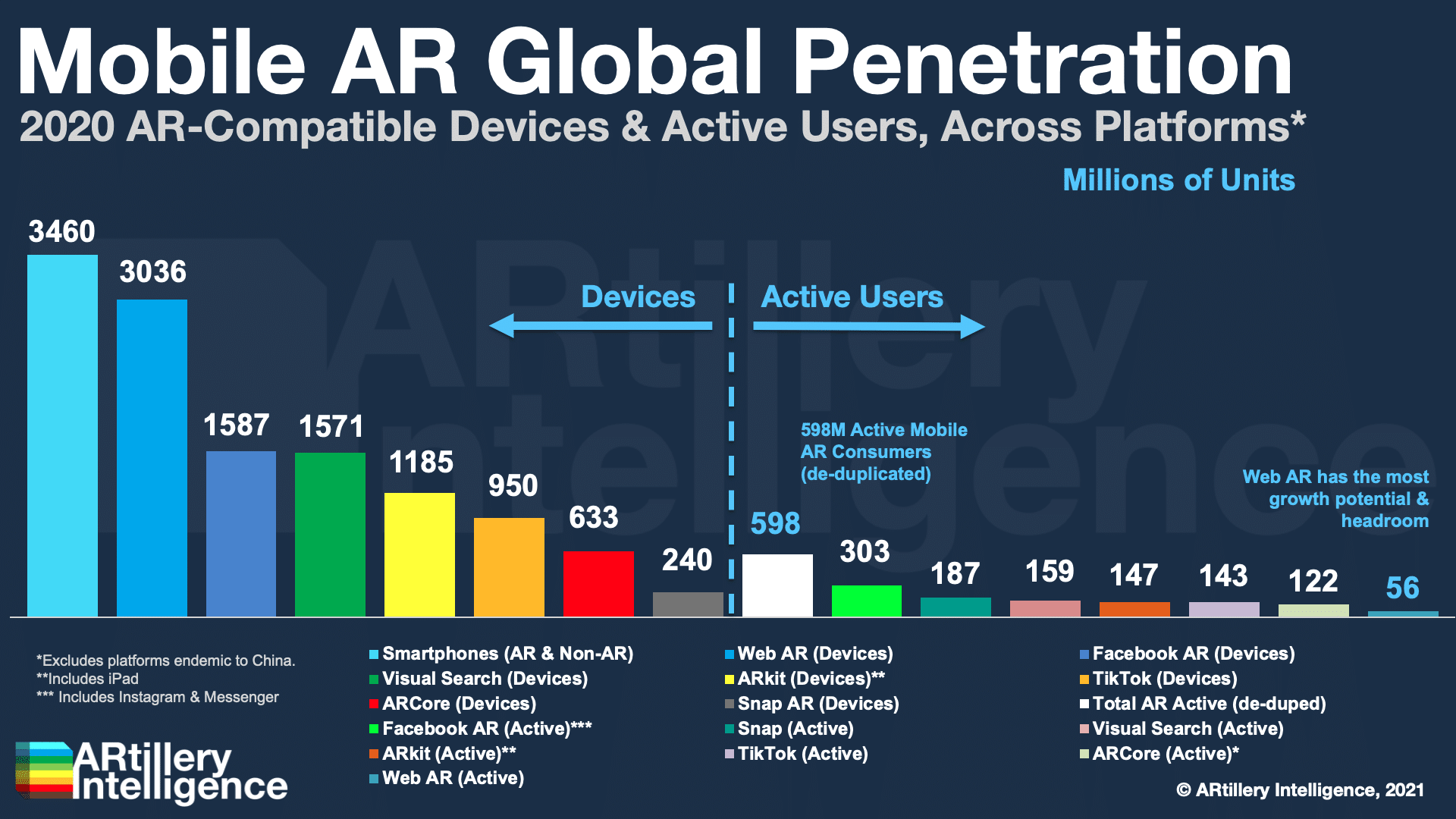
There’s a growing realization that apps aren’t always the optimal vessel for AR. Yet with mobile AR, it’s born on a device where apps rule. 90 percent of mobile users’ time is spent in apps versus the web. Can AR break that cycle? And if so, could web AR be the answer?
As background, Web AR resides within the mobile browser. Advantages include dynamism for AR’s serendipity and short sessions, versus the friction of app stores and downloads. The latter’s “activation energy” dampens AR adoption, which is already challenged to begin with.
For example, will consumers spend 90 seconds downloading an app for an experience that lasts 30 seconds? Consider this in light of dynamic AR activations within a store aisle or social context. These scenarios happen fast and need an AR delivery system that can align with that.
To synthesize these and other web AR dynamics, our research arm ARtillery Intelligence recently gave a presentation at a virtual event. Consisting of data, analysis, and case studies, we’re featuring the presentation for this week’s XR Talks. See it below with summarized takeaways.
Native Advantage
To further breakdown apps versus mobile web dynamics, it should be noted that apps can have some advantages. For one, they can more-directly tap into device sensors when using a native platform such as ARkit that has purpose-built vertical integration with the hardware.
Apps also work well when the use case is something you engage frequently, such as the small tray of daily-use apps like phone, email, messaging or social feeds like Instagram. For these few use cases, home-screen positioning and quick access is well served by native apps.
But this only applies to a handful of apps. What about everyone else? Getting into that exclusive club ain’t easy. So for the vast majority of developers building mobile experiences today — especially in the still unproven AR category — the calculus is different.
This is where web AR can shine, as you can plant universally-operable web links as calls to action wherever you have presence. That includes brand marketing assets like product packaging or any owned media. Snapchat has shown similar potential through Snapcodes that activate AR.

Inheriting Web functionality
Web AR’s other advantage is to inherit all the things that the web does. For example, if operating outside of apps or social walled gardens like Facebook, you can connect AR experiences to your payments processor as well as web-based tools like Google Maps’ API.
In the same spirit, one major web AR advantage is analytics. Other AR channels such as ARkit, ARcore or social networks offer limited analytics to app developers. But with Web AR, any developer can run the experience through Google Analytics to get robust performance metrics.
Similarly, the web offers dynamic software updates for AR experiences. Updates can be pushed rapidly, compared to native app updates that require a roundabout process. This can be valuable in early versions of any AR experience when rapid iteration is the name of the game.
One example of this principle is Ally Bank’s Monopoly-themed Web AR campaign. As the location-based AR game experience played out, its creators were able to send rapid updates as they discovered things that needed to be fixed, such as vulnerabilities for location fraud.
Numbers Game
To add to these qualitative advantages, web AR holds quantitative advantages. Specifically, it has a larger total addressable market than other mobile AR platforms (see chart above). Because it’s browser-based, it has broader compatibility with mobile hardware and operating systems.
Specifically, ARtillery estimates 3.04 billion web AR compatible devices. This is due to the work of innovators like 8th Wall that have been able to get AR to work on commodity hardware and RGB cameras. In fact, the above number is based largely on the device types 8th Wall has tested.
As for other platforms, Facebook is projected to have 1.58 billion AR compatible smartphones, followed by ARkit (1.19 billion), TikTok (950 million), ARCore (633 million) and Snapchat (240 million). When adding up and de-duping these platforms, AR active users total about 600 million.
Looking at web AR in light of these figures indicates headroom and growth potential. It has the lowest active users today of any platform, but the largest compatible hardware base. Along with its merits outlined above, these numbers could signal a promising future for web AR.
See the full presentation below including data breakdowns and case studies.






